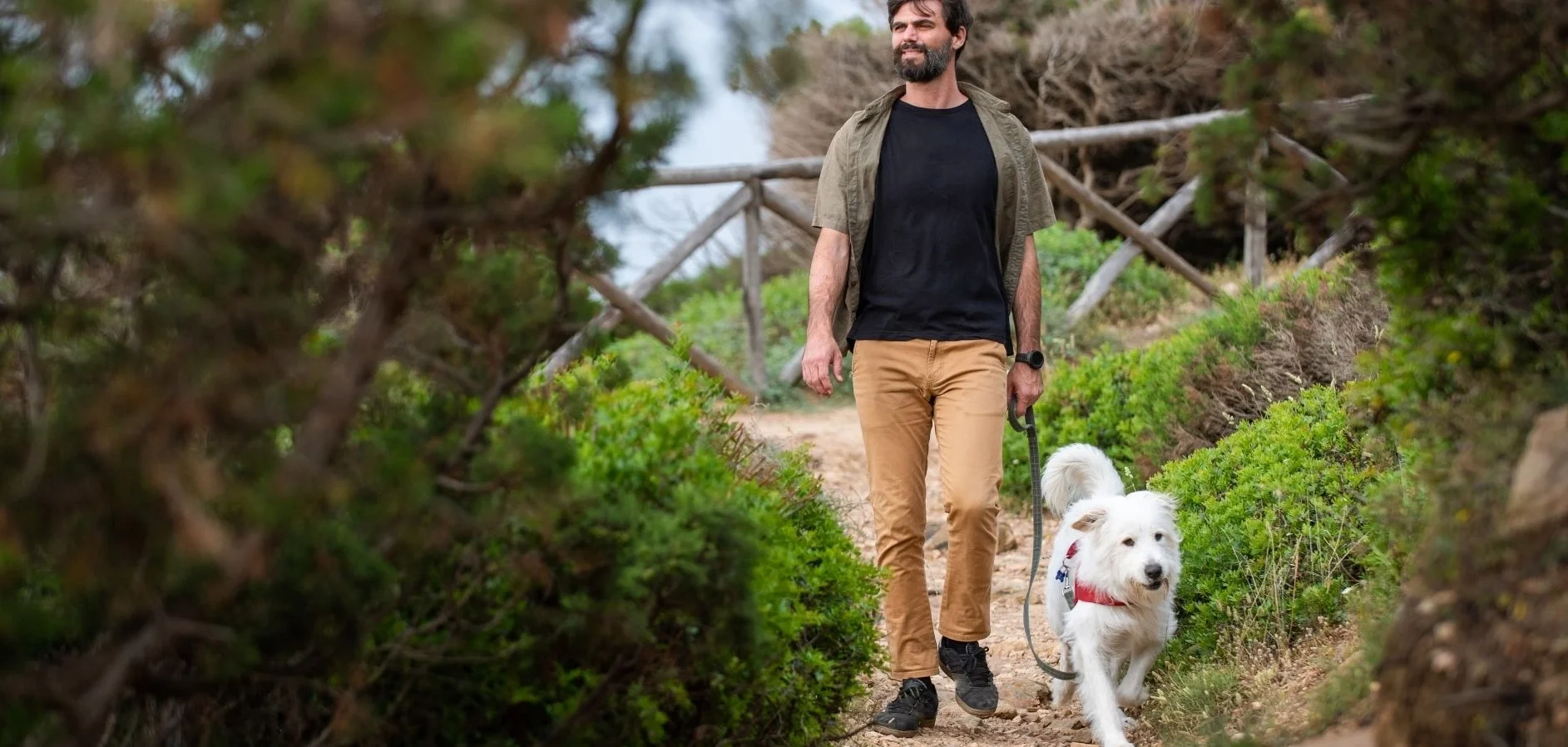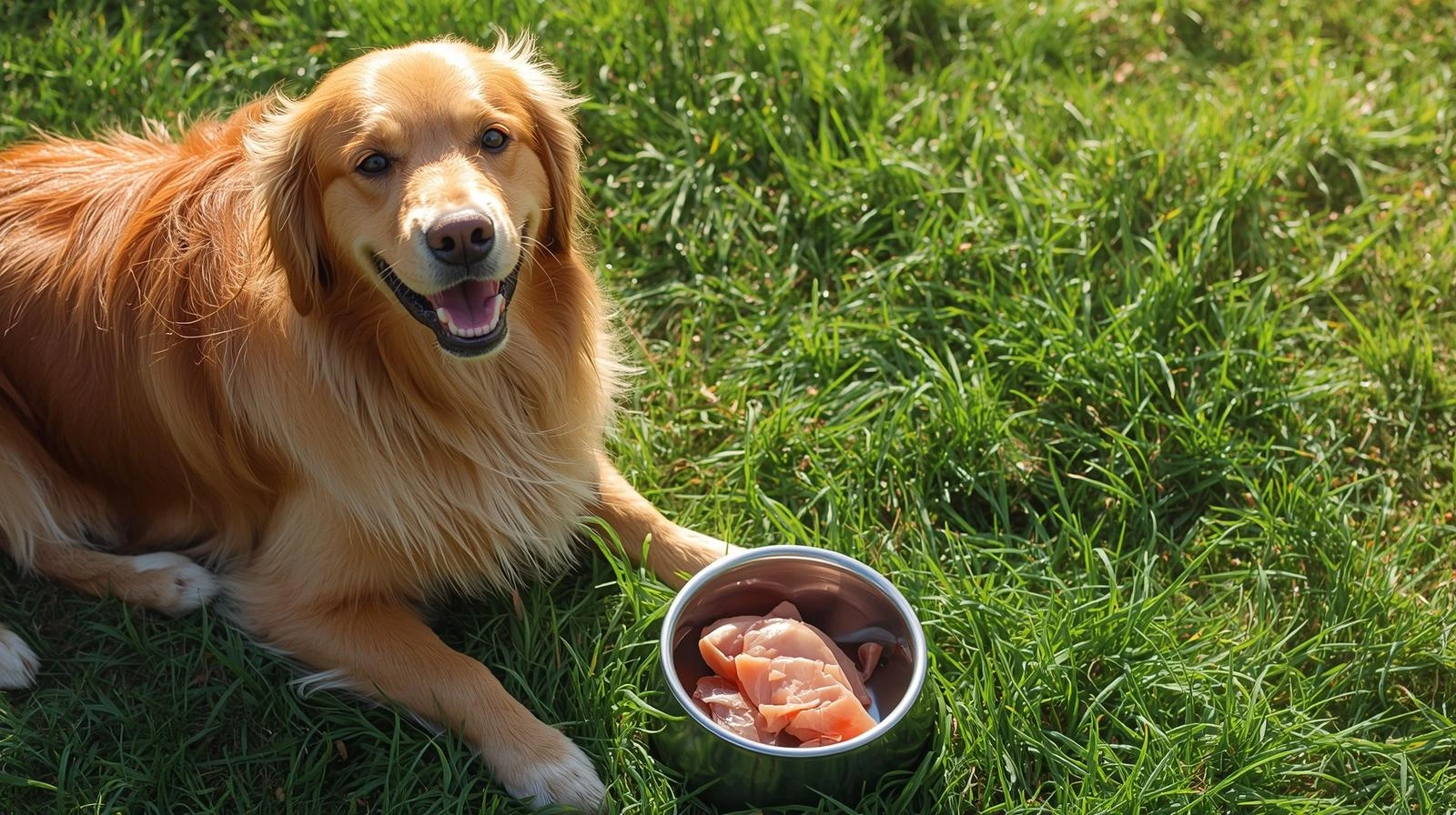Can Dogs Eat Raw Chicken Liver 7 Shocking Truths Revealed
Table of Contents
Introduction: Unlocking the Nutritional Powerhouse of Chicken Liver for Your Dog
Is chicken liver truly a “superfood” for your dog, or are there hidden dangers lurking beneath its impressive nutritional profile? As pet owners increasingly explore raw feeding options, the question of whether can dogs eat raw chicken liver has become more pressing than ever.
Chicken liver has earned its reputation as a nutritional powerhouse, packed with essential vitamins, minerals, and high-quality protein that can significantly benefit your canine companion. However, like many nutrient-dense foods, it comes with both remarkable benefits and potential risks that every responsible dog owner must understand.
The purpose of this comprehensive guide is to provide you with a balanced, veterinarian-backed approach to feeding raw chicken liver to your dog. We’ll explore the incredible nutritional benefits, examine the legitimate safety concerns, and equip you with practical knowledge about proper sourcing, handling, and portion control. Most importantly, we’ll emphasize the critical importance of informed decision-making and veterinary consultation before making any significant dietary changes.
Key Takeaways:
- Raw chicken liver is exceptionally nutrient-dense but must be fed in strict moderation
- Bacterial contamination and Vitamin A toxicity represent the primary safety risks
- Proper sourcing, hygienic handling, and precise portion control are crucial for safe feeding
- Always consult your veterinarian before introducing raw chicken liver to your dog’s diet
Why Chicken Liver is a Nutritional Powerhouse for Dogs
When examining whether can dogs eat raw chicken liver, it’s essential to understand why this organ meat has garnered such attention from canine nutrition experts. The nutritional profile of chicken liver is genuinely impressive, offering a concentrated source of nutrients that can support various aspects of your dog’s health.
High-Quality Protein Foundation Chicken liver provides complete, bioavailable protein essential for muscle development, energy production, and overall metabolic function. This protein contains all essential amino acids your dog needs for optimal health, making it an excellent supplement to their regular diet.
Vitamin Powerhouse The vitamin content in chicken liver is particularly noteworthy. Vitamin A (retinol) supports crucial functions including vision health, immune system strength, and reproductive health. The B-vitamin complex found in liver—including B12, folate, and niacin—plays vital roles in nerve function, red blood cell production, and various metabolic processes that keep your dog energetic and healthy.
Essential Mineral Content Chicken liver delivers an impressive array of minerals. Iron and copper work together to support healthy blood cell production and efficient oxygen transport throughout your dog’s body. Zinc and phosphorus contribute to bone health and overall vitality, while selenium provides powerful antioxidant protection against cellular damage. Additionally, potassium and magnesium support muscle health, cardiovascular function, and immune system strength.
Beneficial Fatty Acids The omega-3 and omega-6 fatty acids present in chicken liver promote healthy skin, contribute to a shiny coat, and support both brain and heart health—benefits that become visible in your dog’s appearance and behavior.
Comparison: Raw vs. Cooked Nutrient Retention
| Nutrient | Raw Liver | Cooked Liver | Key Difference |
|---|---|---|---|
| Vitamin A | ~100% Retained | 80-90% Retained | Some loss due to heat |
| Enzymes | Fully Active | Partially Denatured | Heat can decrease enzyme activity |
| Protein | Unchanged | Slightly Altered | Protein structure may be modified |
| B Vitamins | Mostly Retained | Some Loss | Heat-sensitive B vitamins can be reduced |
| Minerals | More Bioavailable | Moderate | Bioavailability can be affected by cooking |
While cooking reduces some nutrients, it’s important to note that the cooking process also eliminates harmful bacteria, presenting a trade-off between maximum nutrition and safety that each dog owner must consider.
Understanding the Risks of Feeding Chicken Liver to Dogs
Before deciding whether can dogs eat raw chicken liver is right for your pet, you must thoroughly understand the potential risks involved. While chicken liver offers exceptional nutritional benefits, several legitimate safety concerns require careful consideration and management.
Bacterial Contamination: The Primary Safety Concern Raw poultry, including chicken liver, commonly harbors dangerous pathogens such as Salmonella, E. coli, Campylobacter, and Listeria. These bacteria can cause severe illness in dogs, with symptoms including persistent vomiting, diarrhea, fever, and lethargy. In severe cases, bacterial infections can be life-threatening, particularly for puppies, elderly dogs, or those with compromised immune systems. Additionally, cross-contamination poses significant health risks to human family members, making proper handling absolutely critical.
Vitamin A Toxicity: The Hidden Danger of Overconsumption While Vitamin A is essential for health, chicken liver contains such concentrated levels that excessive consumption can lead to hypervitaminosis A. This condition manifests through joint pain, bone abnormalities, digestive upset, skin peeling and dryness, decreased appetite, weight loss, and potential liver damage. Long-term overconsumption can result in chronic health problems that may require extensive veterinary intervention.
High Fat Content Considerations Chicken liver’s relatively high fat content can contribute to unwanted weight gain, especially in sedentary dogs. More concerning is the risk of pancreatitis, a serious condition that can develop when dogs consume too much fat, particularly if the liver is fed alongside fatty chicken skin or other high-fat foods.
Potential Allergic Reactions Some dogs may develop allergic reactions to chicken liver, displaying symptoms such as itching, hives, vomiting, diarrhea, excessive scratching, lethargy, loss of appetite, ear infections, flatulence, obsessive licking, skin infections, or rashes. If any of these symptoms appear after feeding chicken liver, discontinue feeding immediately and consult your veterinarian.
Nutritional Imbalance Risks When chicken liver comprises too large a portion of a dog’s diet, it can create nutritional imbalances, leading to deficiencies in other vital nutrients. Liver should always be considered a supplement to a balanced diet, never a primary food source.
Associated Raw Feeding Risks While chicken liver itself doesn’t contain bones, pet owners exploring raw feeding should be aware that can dogs have raw chicken bones is another important consideration. Raw bones can pose choking hazards if not properly sized for your dog, and this risk extends to any complete raw chicken feeding approach.
Safely Introducing and Feeding Chicken Liver to Your Dog
Understanding the question can dogs eat raw chicken liver safely requires mastering proper sourcing, preparation, and feeding techniques. Following these guidelines can help you minimize risks while maximizing nutritional benefits.

Strategic Sourcing Approaches Always prioritize human-grade chicken liver to minimize pathogen exposure and ensure quality standards. Purchase from reputable butchers or specialized pet food suppliers who understand proper meat sourcing and handling protocols. When possible, choose organic or free-range options to reduce exposure to chemicals and hormones. Before purchasing, inspect the liver for any unusual colors, odors, or textures that might indicate spoilage.
Essential Preparation Guidelines
Hygiene Protocol: Maintain paramount cleanliness by thoroughly washing hands, cutting boards, and utensils before and after handling raw meat. Consider dedicating separate tools exclusively for raw pet food preparation to prevent cross-contamination with human food.
Storage and Handling: Keep chicken liver refrigerated below 40°F (4°C) and freeze at -4°F (-20°C) for a minimum of two weeks to reduce bacterial risk for extended storage. Thaw only the amount needed for 3-5 days in the refrigerator, never at room temperature. Remove any uneaten food after one hour and clean bowls thoroughly. Never add salt, garlic, onions, or other seasonings that can be toxic to dogs.
Introduction and Portion Control Strategy Begin with tiny amounts—1-2 teaspoons for small dogs, 1 tablespoon for larger breeds—to avoid digestive upset. Mix the liver with your dog’s regular food, rice, or dog-safe vegetables to aid digestion and acceptance.
Feeding Guidelines: Chicken liver should never exceed 5-10% of your dog’s total diet. For adult dogs, approximately 1 ounce (28g) daily represents a safe amount for most dogs, though this should be adjusted based on size, weight, and activity level.
For puppies, liver should comprise only 5% of the 10% organ meat portion within a properly balanced raw diet (following the 80% muscle meat, 10% bone, 10% organ formula). Introduce liver to puppies no earlier than 12 weeks of age, with portion sizes calculated at 2-3% of expected adult weight, divided into 3-4 daily meals.
Always monitor your dog’s reaction carefully, watching for signs of allergic reactions, digestive upset, or other adverse effects.
Cooked vs. Raw Chicken Liver: Making the Best Choice for Your Dog
When considering can dogs eat raw chicken liver, many pet owners wonder whether cooking might be a safer alternative. Both approaches have distinct advantages and drawbacks that deserve careful consideration.
Raw Chicken Liver Benefits and Drawbacks Raw liver retains maximum natural enzyme activity and delivers vitamins and minerals in their most bioavailable forms. This approach aligns more closely with ancestral canine diets and may provide optimal nutrient absorption. However, raw liver carries higher risks of bacterial contamination and requires meticulous handling to prevent foodborne illness.

Cooked Chicken Liver Advantages and Limitations Cooking eliminates harmful bacteria, making liver safer for dogs with sensitive stomachs or compromised immune systems. Cooked liver is often easier to digest and reduces cross-contamination risks for human family members. The downside involves some loss of heat-sensitive nutrients and reduced enzyme activity.
Professional Recommendation Most veterinary professionals recommend cooked chicken liver as the safer option, particularly for pet owners concerned about bacterial risks or dogs with digestive sensitivities. If you choose to cook liver, lightly boil or sauté without any seasonings to preserve maximum nutrition while ensuring safety.
When to Consider Alternatives and Other Organ Meats
Recognizing when to seek alternatives to chicken liver is crucial for responsible pet ownership. Understanding can dogs eat raw chicken liver safely also means knowing when to stop or switch to other options.
Warning Signs of Overconsumption Watch for persistent vomiting, unusual drowsiness or lethargy, skin peeling or dryness, decreased appetite, or sudden weight loss. If any of these symptoms appear, immediately stop feeding liver, contact your veterinarian, provide fresh water, and monitor your dog’s behavior closely.
Alternative Organ Meat Options Beef liver offers similar nutritional density with high levels of vitamins A and B, plus iron. Pork liver provides excellent protein and key nutrients, while lamb liver delivers abundant minerals and is often easily digestible. Chicken hearts and gizzards supply protein, CoQ10, taurine, cartilage, iron, zinc, B12, and glucosamine for joint health. Pork hearts and buffalo hearts represent additional nutritious alternatives.
Commercial and Homemade Solutions Pre-formulated commercial raw diets often include appropriately balanced organ meats while maintaining stringent quality and safety protocols. For homemade options, consider simple treats like dehydrated liver chips, frozen liver cubes blended with plain yogurt, or training treat balls made with ground liver and eggs.
Nutritious homemade mixes might combine liver with ground beef, sweet potatoes, bone broth, carrots, spinach, lean ground turkey, and ground eggshells for calcium balance.
The Crucial Role of Your Veterinarian
When exploring can dogs eat raw chicken liver, your veterinarian serves as an invaluable resource for personalized guidance. Professional consultation ensures that dietary changes align with your dog’s specific health needs and circumstances.
Why Professional Consultation Matters Every dog presents unique considerations including age, breed, activity level, existing health conditions, and individual nutritional requirements. Your veterinarian can assess potential risks of raw feeding specific to your dog, create a balanced diet plan tailored to your pet’s needs, and provide guidance for safely transitioning to new foods.
Preparing for Your Veterinary Visit Gather records of your dog’s current diet, list any existing health conditions, and prepare specific questions about raw feeding. This information helps your veterinarian provide the most relevant and helpful guidance.
Ongoing Monitoring Regular check-ups become especially important when implementing dietary changes. Schedule follow-up appointments every 3-6 months to monitor your dog’s health and adjust the diet plan as needed. Your veterinarian may recommend specific supplements such as omega-3 fatty acids for skin and coat health, probiotics for gut flora balance, or multivitamins for comprehensive nutrient intake.
Conclusion: Is Raw Chicken Liver Right for Your Dog?
The question can dogs eat raw chicken liver doesn’t have a simple yes or no answer. Chicken liver undoubtedly offers exceptional nutritional benefits that can support your dog’s health in multiple ways. However, these benefits come with significant risks that require careful management, extensive knowledge, and ongoing vigilance.
The key lies in moderation and balance. Chicken liver should serve as a small component of a varied, nutritionally complete diet rather than a dietary staple. Proper sourcing, meticulous preparation, and appropriate portion control can help minimize risks while allowing your dog to benefit from this nutritional powerhouse.
Most importantly, never make significant dietary changes without professional veterinary guidance. Your veterinarian can help you determine whether raw chicken liver is appropriate for your specific dog and provide personalized recommendations for safe implementation. This collaborative approach ensures the best possible health outcomes and happiness for your furry family member.
Frequently Asked Questions (FAQs)
Is raw chicken liver safe for dogs to eat? Raw chicken liver can be safe when properly sourced, handled, and fed in appropriate quantities, but it carries risks of bacterial contamination and vitamin A toxicity. Cooked liver is generally considered safer.
What nutritional benefits does chicken liver provide for dogs? Chicken liver offers high-quality protein, vitamin A, B-vitamins, iron, copper, zinc, phosphorus, selenium, and beneficial fatty acids that support muscle development, immune function, and overall health.
How much raw chicken liver should I feed my dog? Chicken liver should not exceed 5-10% of your dog’s total diet, typically about 1 ounce (28g) daily for most adult dogs, adjusted for size and activity level.
What are the risks of feeding too much chicken liver to my dog? Excessive consumption can lead to vitamin A toxicity, causing joint pain, digestive issues, skin problems, and potential liver damage. Bacterial contamination is also a significant concern with raw liver.
Can I feed my dog cooked chicken liver instead of raw? Yes, cooked chicken liver is generally safer as it eliminates harmful bacteria while retaining most nutritional benefits. Cook without seasonings by lightly boiling or sautéing.
Are there alternatives to chicken liver for dogs? Yes, alternatives include beef liver, lamb liver, pork liver, chicken hearts and gizzards, and commercial raw diets that include balanced organ meat portions.
How do I know if my dog is having an adverse reaction to chicken liver? Watch for vomiting, diarrhea, lethargy, skin issues, excessive scratching, loss of appetite, or behavioral changes. Discontinue feeding and consult your veterinarian if these symptoms appear.
Should I consult a veterinarian before adding raw chicken liver to my dog’s diet? Absolutely. Always consult your veterinarian before making significant dietary changes to ensure the approach is appropriate for your dog’s specific health needs and circumstances.
There are no reviews yet. Be the first one to write one.


